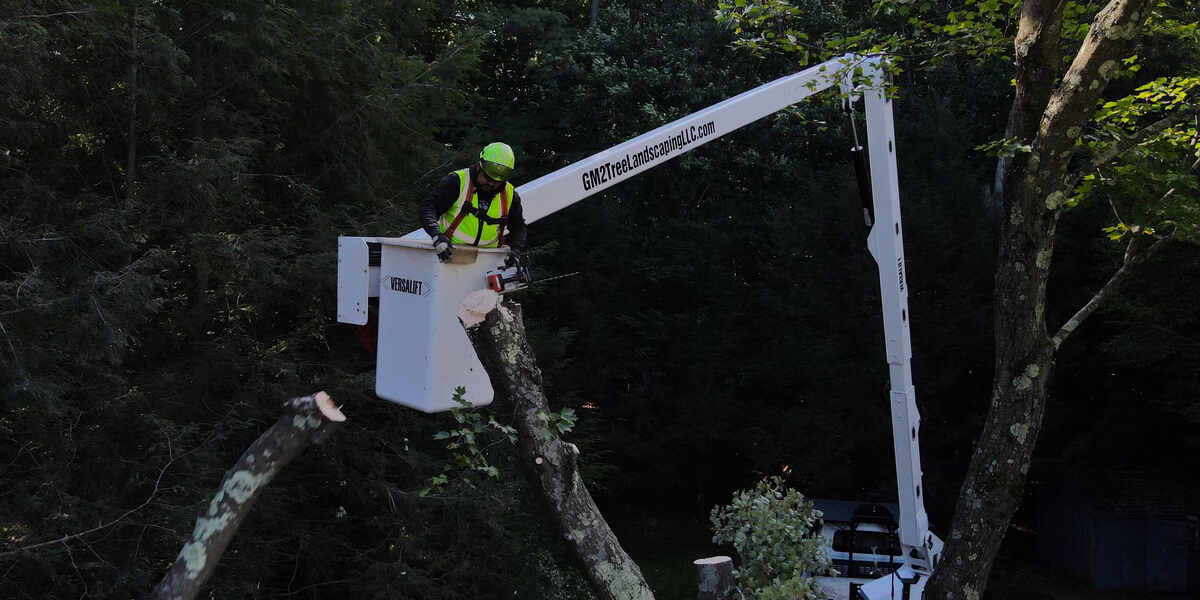Trees don’t normally have yellow leaves, unless you’re enjoying the scenery on a beautiful day in September or October. Yellow leaves due to inadequate synthesis of chlorophyll and nutrients can indicate chlorosis in trees. Chlorosis can harm trees from reaching their full potential.
At GM 2 Tree Services, LLC, we provide the best Bristol tree services for residents of Hartford County. We know how to safely treat many tree problems and to ensure the healthiest, stunning trees yet. Keep reading about chlorosis, then give our trusted team a call for a service quote.

What Is Chlorosis?
Chlorosis is an issue trees deal with when they don’t have enough nutrients or chlorophyll. Trees that reside in alkaline soils, or soils with a high pH, are more likely to suffer from chlorosis. Several causes can lead to this lack of chlorophyll.
Chlorosis can stem from excessive organic matter or too little nutrients in soil. It also occurs when soil is overwatered, invaded by pests, or too tightly packed. Trees are unable to produce the chlorophyll that makes their leaves appear green.
If trees reside in areas with heavy herbicide usage, this could also lead to chlorosis. Chlorosis causes trees to suffer and become more vulnerable to disease and pest damage. They also might not develop as many fruits, flowers, and nuts as they previously did because of stunted growth.
Chlorosis in Trees: What You Need to Know
Fortunately, you can look for the warning signs of chlorosis in trees. You can also use professional treatments to restore your trees to their once-healthy, nutrient-rich state.
Signs of Chlorosis in Trees
The most common sign of a chlorosis-affected tree is yellow-colored leaves. Unless it’s fall, we expect trees to have green leaves due to their chlorophyll, so if it’s lacking, it could have iron deficiency and chlorosis. More severe cases can result in white-colored leaves with yellow veins or browned and broken leaf edges.
Preventing Chlorosis in Trees
It’s better to prevent chlorosis, rather than have to treat it later. Some preventative measures you can take are as follows:
- Plant tree species that are native or known to do with your soil based on your location.
- Don’t plant trees in areas with extremely high or low pH levels.
- Apply organic mulch and compost on top of your soil to increase nutrient levels.
Ways to Treat Chlorosis in Trees
Fortunately, you’ll find several ways to treat chlorosis in trees, but you have a professional complete the job. Here are some ways to deal with the frustrating and harmful issue of chlorosis:
- Perform trunk injections with iron sulfate, or spray it on.
- Add more iron to the soil by spraying a chelated iron.
- If your soil’s pH is too alkaline, apply an elemental sulfur.
Handling these chemicals without professional training can be dangerous. You could inadvertently harm yourself or other plants.
Contact Our Tree Service Team
At GM 2 Tree Services, we have extensive knowledge about common tree problems, such as how emerald ash borer kills trees. If you’re dealing with chlorosis in trees in Bristol, CT, and are wondering how to make a tree healthy again, call us at (203) 527-6237 or (860) 940-5783 to schedule services.
